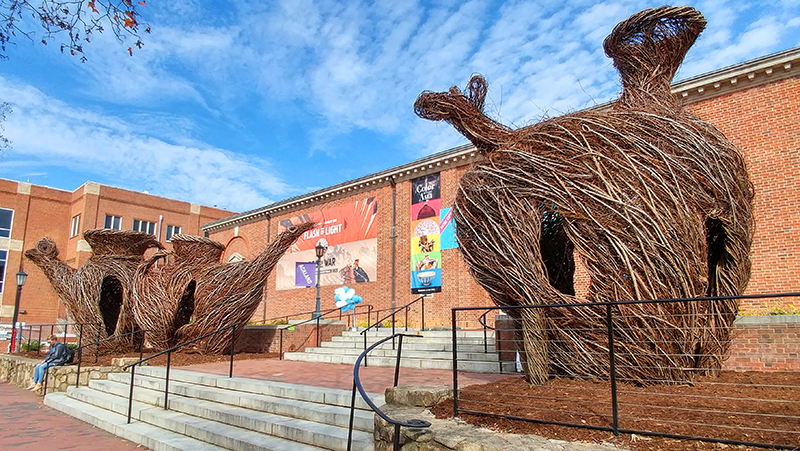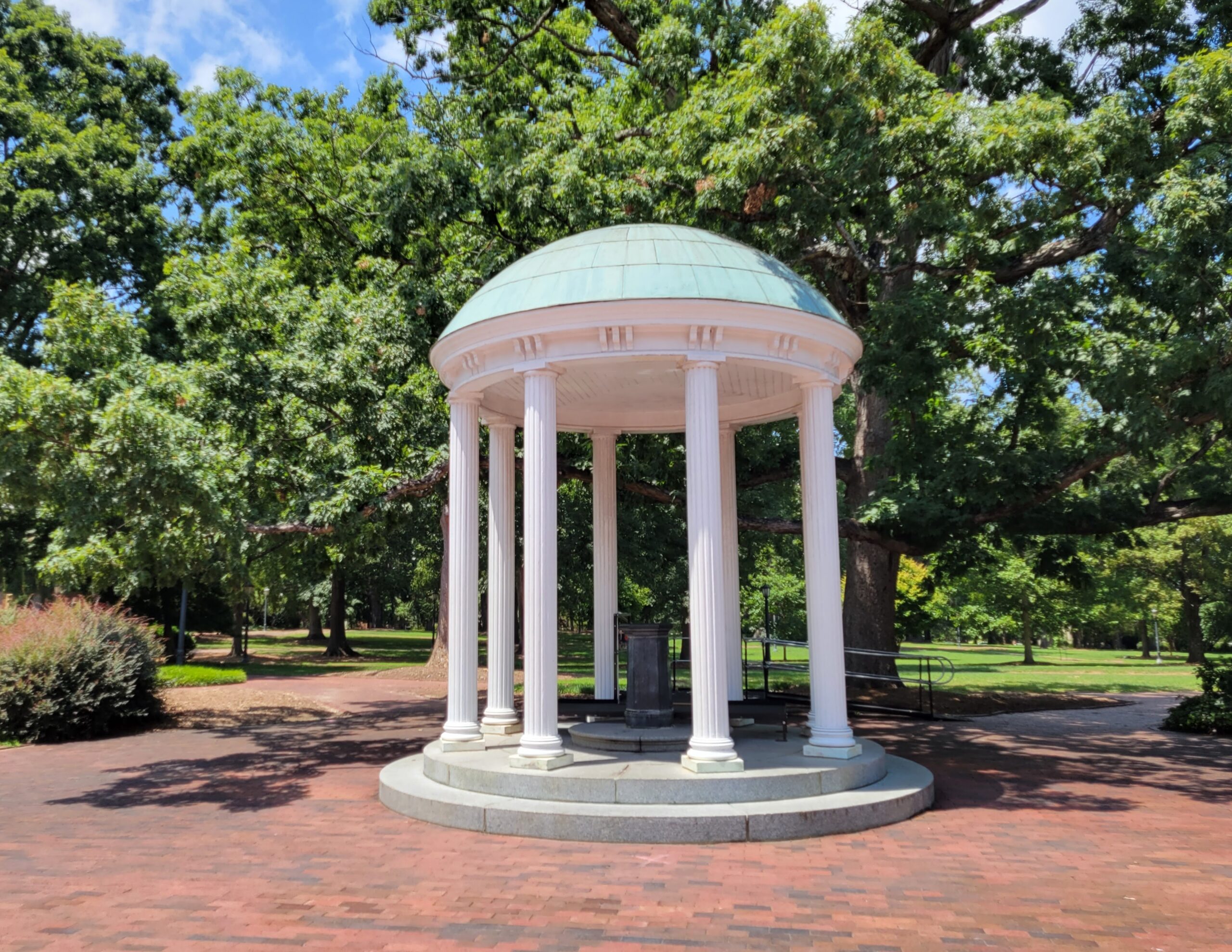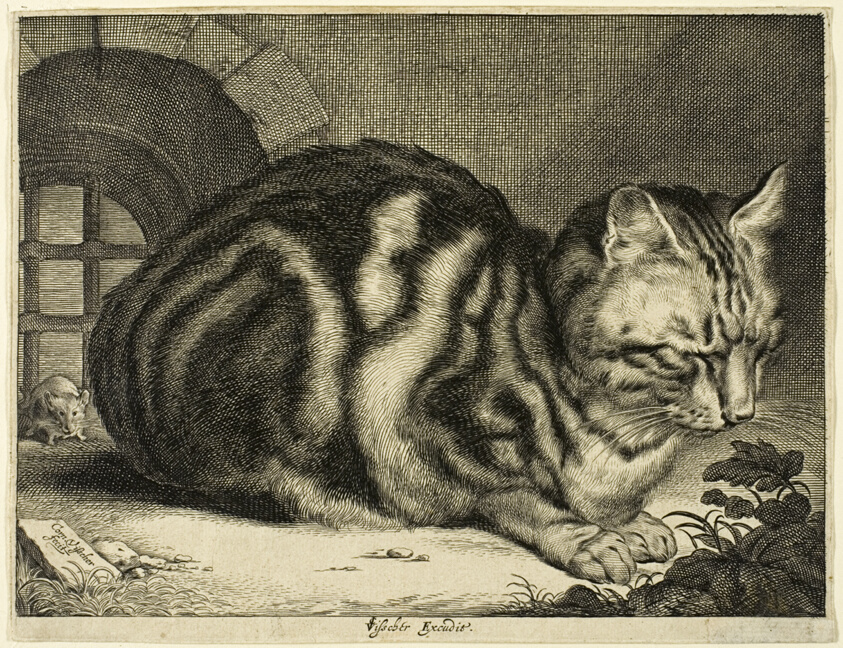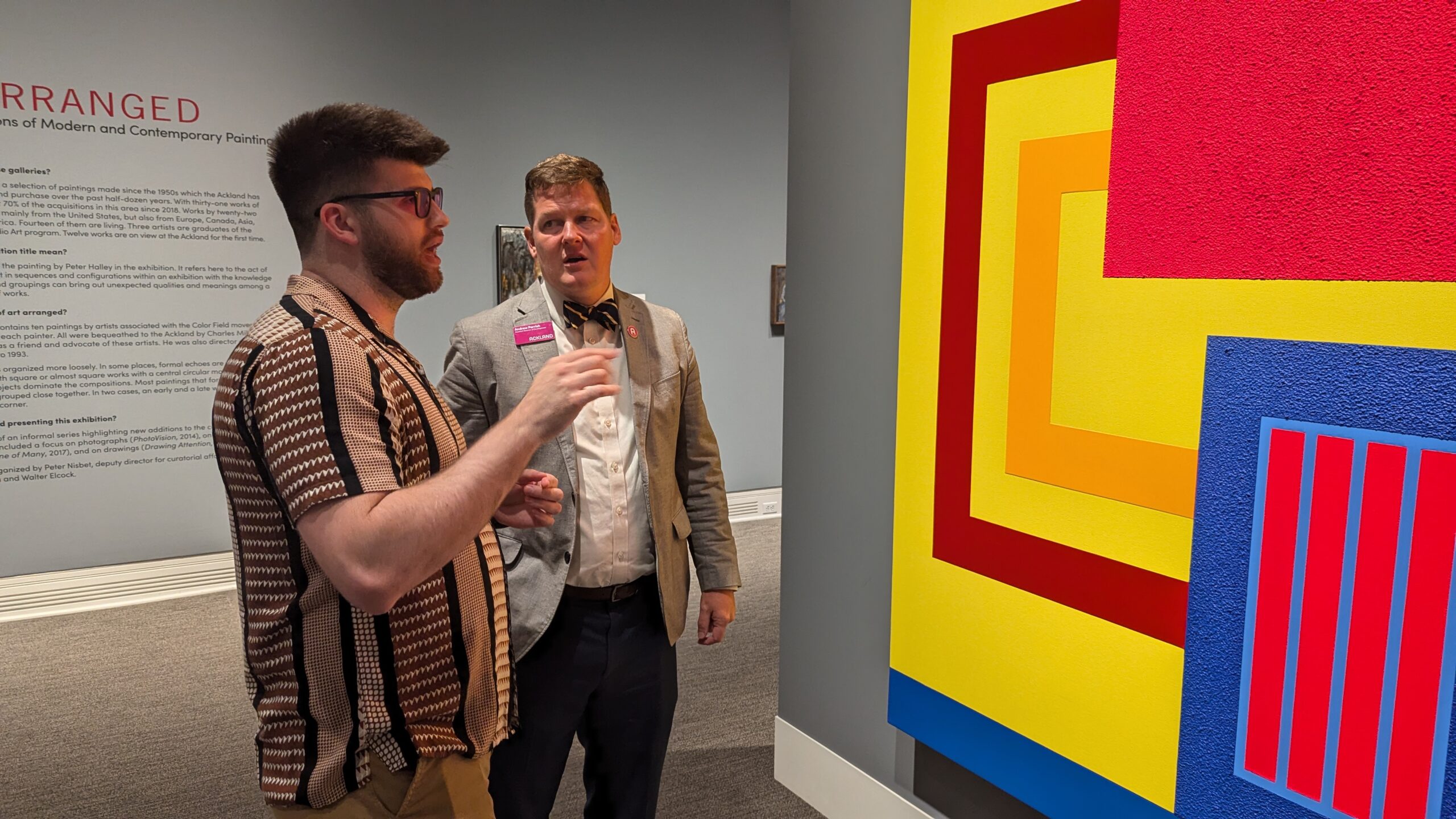If you’ve driven by the Craige Parking Deck on Manning Drive recently, you might have noticed the UNC-run deck getting several new splashes of color on its sides. It’s the latest piece by internationally-known artist Amalia Pica, and was commissioned by the university to be a permanent fixture.
After celebrating the installation with the university last week, Pica visited 97.9 The Hill to share more about the piece. Pica — who’s work has been featured by the Tate Modern museum in London, the Museum of Modern Art in New York, and the Museum of Contemporary Art in Chicago — shared the inspirations, input, and process behind “Drawn to Explain,” which took her several years from start to finish.
Below is a transcript of Pica’s conversation with 97.9 The Hill News Director Brighton McConnell, which has been lightly edited for clarity. To listen to the conversation, click here.
Brighton McConnell: Congratulations on the finishing of this really big project… It is pretty impressive and it certainly took a while to get it installed because there are so many different pieces to it. For people who might not have driven that way in our community just yet, can you describe what drawn to explain looks like right now on the side of Craige Parking Deck?
Amalia Pica: “Drawn To Explain” is sculptures made out of metal. They’re sort of flat sculptures that are applied over the façade of the parking deck, which also has been painted. And all the sculptural shapes have to do with diagrams that are used to archive, transmit, and produce knowledge on campus.
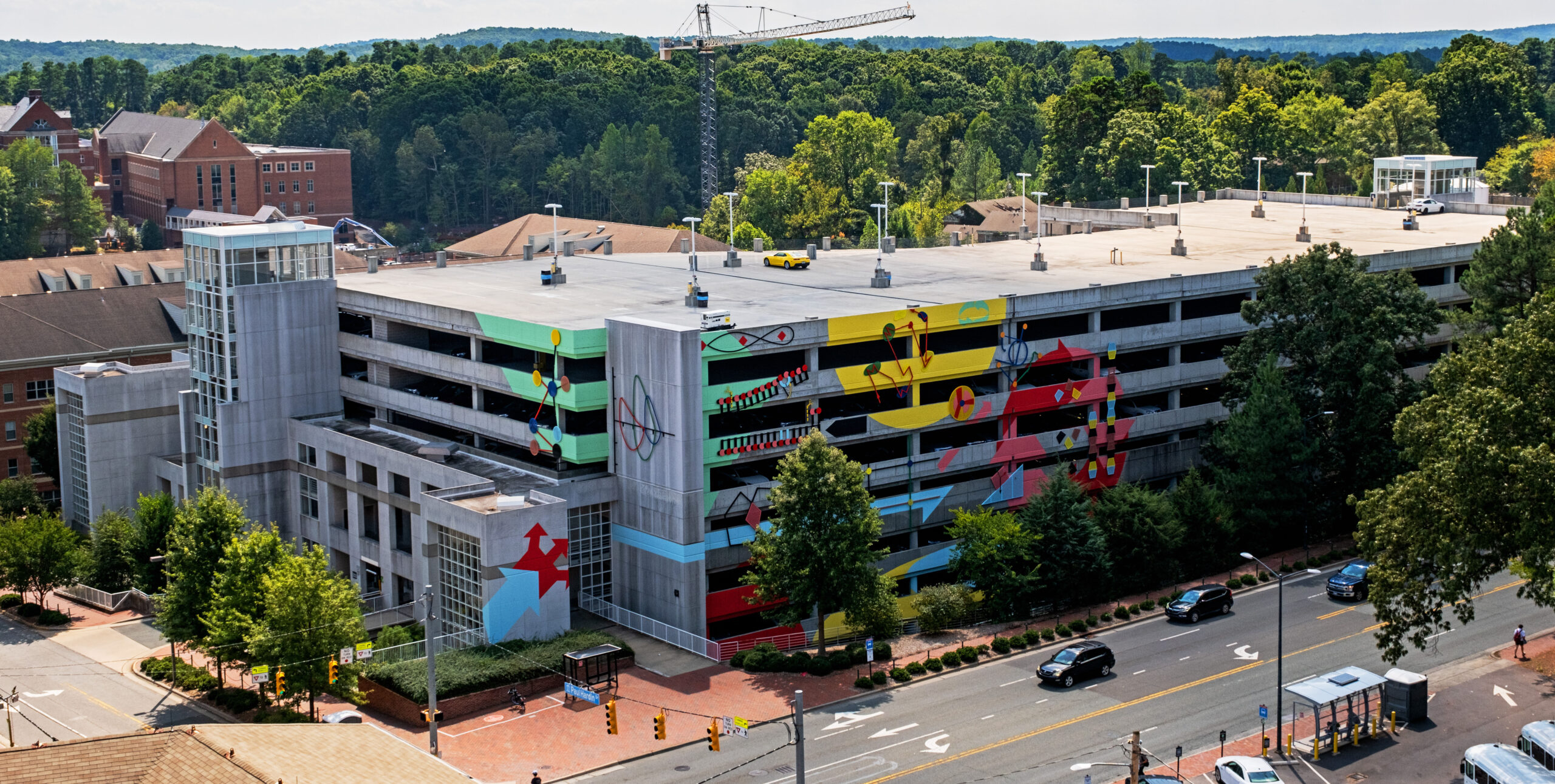
The Craige Parking Deck is adorned with a mural titled “Drawn To Explain” by artist Amalia Pica on September 19, 2023, on the campus of the University of North Carolina at Chapel Hill. (Photo via Jon Gardiner/UNC-Chapel Hill.)

Amalia Pica works in several different mediums, but her contemporary pieces often reflect different metaphors and often encourage civic participation.
McConnell: You are from London and are visiting Chapel Hill to put this piece together and then help unveil it today. What was it like getting to know the community as you were putting that piece together? Because you took a lot of feedback into what people wanted to see and used that to help kind of inform what different pieces, what different colors you wanted to put up there, right?
Pica: Right. I’m originally from Argentina, from Patagonia, and I do live in London. I was commissioned to do artwork for the façade. I went to art school at a time where art schools weren’t absorbed into the university structure. So when I was first invited [to UNC], I just wanted to be on campus. So, I came up with an idea that would allow that.
I had conversations with faculty members and some students about their fields [of work] and how images appear in the way that they pass on that knowledge. I, sort of, had the most interesting month of my life. I basically talked to people about what they’re passionate about, and what they’re good at, and collected images. Some of them made it onto the façade, but because I feel like all the contributions were important, all of the 50 or so people I spoke to are listed as collaborators [for the piece].
McConnell: That’s fantastic. What were some of the things that you felt like you learned the most speaking with those people and that you specifically wanted to incorporate?
Pica: What got incorporated wasn’t necessarily what I wanted to. There’s so many things that determined that — like, is this diagram easy to translate into metal? Is the budget enough to to translate 20 or 10 or five of those? But generally speaking, I had super interesting conversations. One of my favorite moments of that visit five years ago now… this was a project that took a long while because it was also interrupted by COVID-19… was going to the rare books library, talking to the librarians and saying, ‘I’m looking for diagrams that look great!’ Usually, you know, if you go into a library, you have to say, ‘I’m researching this topic’ and not just say what [the pages] look like. But the librarians were very eager to work with artists and very amenable to that. I also got to hold a caterpillar in a lab, learn about geological events, and even got a bit of rock that has my name on it.
I did have the time of my life, and I know that a lot of those conversations are not just feeding into this artwork, but will feed into my future artwork. Some of the things that did make it to the façade are a repair diagram, diagrams about physics, septin proteins or urban planning…. and there’s even a basketball diagram! So, if you visit the site, there will be a big sign with a QR code as that you can scan. You can go into the Ackland Museum’s website and learn more about what the different elements mean. But if you don’t know much about each element, you can still experience the artwork for its like shape and color.
McConnell: Your other work that I have looked up and seen in museums definitely seems to be not nearly [on] as big of a scale as working on the side of a parking deck. I would say the themes are very consistent in terms of using a mix of abstract art and, as you said, using real life things to kind of find a new form in your artwork. But what was it like working on this gigantic scale, several stories tall?
Pica: Yeah, it’s a real opportunity and obviously it’s the kind of scale and budget that you don’t get much as an artist. I’m kind of glad that it doesn’t happen all the time [laughs], but it was incredible. It does mean also that it’s much more of a collective effort than just making work alone in your studio. There’s engineers involved, and a fabricator, and people that need to make sure that this doesn’t fall onto anyone’s head or anyone’s car. But yeah, it feels like a real opportunity. I often think about it… as a writer, for example, you might write a novel or you might write a short story or a text message. As artists, we get to do the same thing: we get to experience different scales. And, obviously, the other thing that is amazing about this is that it’s going to stay there for very long time — so it needs to withstand weather. That also determines the shapes and the materials that you can use.
McConnell: Can you share a little bit more about working with the metal and how everything [was installed] up there? It took a little while, it went up in pieces and I know it caught my eye. How did, how did you approach the actual physical assembly?
Pica: For that, I did have help — I didn’t [personally] do it, I wouldn’t have the insurance to get up there. It’s definitely working more in an architectural scale, so it feels more like I was an architect to design something. Actually, the operation is sort of relatively short. It’s just that the process of the artwork from it being an open call, to shortlist artists, to then getting selected by a committee, coming to campus, it being interrupted by a global pandemic, and then getting it fabricated and getting it on-site. That is what took five years — but actually the installation of it took a few weeks. And it was magic! There was a swing stage… we couldn’t build scaffold because of the terrain, so it had to hang off the building, and it was just really beautiful to see it go up. I’m really excited that it’s finally done. What is sad is that the artwork is starting [its time on campus], but it’s probably one of my last visits to Chapel Hill. I grew quite accustomed to coming often.
McConnell: I know that you said “Drawn to Explain” is going to be on Craige Deck for a long time. Everybody’s going to interpret it differently, but I’m hoping you can give some insight into how you hope people will be able to take something away from it years from now… versus what people might take away from it in the short term. As it stays there and it’s no longer the new piece that’s necessarily catching somebody’s eye, but as something that’s been there for a long time and catching the eye of somebody coming to campus decades from now.
Pica: Yeah…. So I had a little bit of [a unique] experience in that I didn’t expect for the process to take so long. If we would’ve opened this piece two or three years ago, all the meetings and all the conversations that took [place], choosing certain diagrams that went up onto the façade would be fresher in my mind. So, I get to be a little bit distant as well. I’m hoping that people as they see it more and more, they maybe every now and then take the time to read about some of the diagrams, to read part of the signage and learn a little bit more about it. But [I also hope] that it might also become like many public artworks do — a way of identifying a place. So, maybe it’s just gonna be like ‘the colorful parking deck,’ or it will alter the perception of that corner and it become a bit of a way of navigating that [part] of campus.
McConnell: As we wrap up, are there any other exciting things that you’re looking forward to working on?
Pica: Yeah, you can Google my name and some things will appear. I’m also, at the moment, working on a similar scale commission for a children’s hospital in the U.K., which hasn’t been built… that’s my next project I’m excited about. I have a solo show coming up in New York City at my American gallery called Tanya Bonakdar. And then I’m also part of a biennial in Ecuador called the Koca Biennial, which will be happening December… so I’m quite busy!
To learn more about “Drawn to Explain” and the components of the mural, visit the Ackland Art Museum’s page for the piece.
Chapelboro.com does not charge subscription fees, and you can directly support our efforts in local journalism here. Want more of what you see on Chapelboro? Let us bring free local news and community information to you by signing up for our biweekly newsletter.

